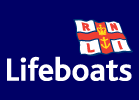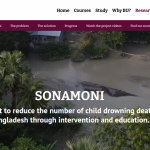 By Dr. Ann Luce
By Dr. Ann Luce
Journalists have an important role to play in the prevention of suicide through ethical and responsible reporting of this sensitive topic. Global media reporting guidelines on suicide have been around for more than 20 years; UK-specific guidelines for at least half that. The Editor’s Code of Practice first updated its guidance on how to report suicide in 2006, with a further update in 2015.
Yet, suicide reporting in the UK continues to be problematic and harmful. Suicide rates in the UK are on the rise. Statistics released just last week, in advance of World Suicide Prevention Day, by the Office of National Statistics show there were 5,316 suicides in England in 2019, a rise of 5% in the suicide rate to 10.8 per 100K people, the highest rate since 2000. The UK suicide statistics are not yet available, but expected in the months ahead.
In 2018, across the UK, there were 6,507 deaths, which left up to 878,000 people bereaved and at a higher risk for suicide themselves. Never has responsible and ethical reporting of suicide been more important.
There is broad agreement within all global guidelines on suicide that key areas to consider include: method and location; copycat behaviour; appropriateness of language and word placement in a story; sensationalizing or romanticising suicide; celebrity cases; unusual situations like murder-suicide; use of video, audio and social media and the inclusion of helpline information.
However, the clauses in regulatory codes of conduct—as opposed to guidelines—mostly concentrate on reporting the method, and while they might aim to minimise harm, their scope in terms of suicide prevention advice is limited.
Journalists have frequently reported that they don’t use suicide guidelines because, a.) they are unaware of the guidelines, b.) they’re not legally required to follow them c.) they’re just too busy and forget to consult them. The problem here is that journalists do not always recognise the manner in which their reporting might be considered sensationalistic, stigmatising and unsafe.
My colleague, Dr. Sallyanne Duncan (University of Strathclyde) and I recently completed a study looking at adherence to media reporting guidelines in British journalism. We found that 55% of all stories in our sample were sensationalized. A quarter of stories provided explicit details about the method of death, while 23% provided explicit and unwitting ‘guidance’ or a roadmap on how to die by suicide using a particular method.
The word suicide appeared in 32% of all headlines, which is against the advice in media reporting guidelines. Just over 20% of stories made specific mention of the location of the death while 13% of stories framed and ‘normalised’ the act of suicide as if it were a solution to a problem, a rather simplistic assessment of a complex public health issue.
Unsurprisingly, we found that 61% of stories implied or emphasised a reason for suicide, reducing a complex problem down to a single unconfirmed reason. In 15% of online stories, video accompanied the story, which is considered harmful to those bereaved, as in most cases they have not provided permission. Most worrying of all was that 60% of stories did not contain helpline information, breaking World Health Organization, National Union of Journalists and Samaritan’s reporting guidelines on suicide.
To help journalists report more responsibly and ethically on suicide, we have devised the Responsible Suicide Reporting (RSR) model and an accompanying online toolkit, www.suicidereportingtoolkit.com.
The RSR model offers journalists a middle way to minimise harmful content whilst maximising supportive, helpful elements. The model supplements the valuable guidance produced by organisations like the WHO, Samaritans, National Union of Journalists, Independent Press Standards Organisation and Mindframe (Australia), and embeds this guidance in the storytelling process.
The RSR model is pragmatic and internal to journalists’ news-work. It functions within the storytelling process, reflecting recognised journalistic narratives involving people, although it may not be applicable to every extant story type, eg. stories based predominantly on data/statistics. But, it addresses hindrances to journalists’ use of guidelines, eg. lack of awareness, reluctance to consult them, taking time away from reporting to check and apply them, tight deadlines and fewer journalists doing increasing amounts of work.
The Responsible Suicide Reporting model consists of three steps:
- Identifying the suicide story type
- Applying 4 ethical rules
- Applying a standard of moderation
In Step 1, we ask journalists to identify which type of suicide story they are reporting:
- Event driven: the first recognition that a traumatic event has happened and that a newsworthy death has occurred
- Post judicial: focuses on a court case, inquest or other legal proceedings
- Tribute driven: where the grieving family and friends pay tribute to the deceased
- Anniversary: normally marking the death’s first anniversary, but can be later ones as well (suicide anniversaries tend to happen in 1, 5, 10, and 25-year blocks, such as in the case of the rock musician Kurt Cobain)
- Action as memorial: where the bereaved family and friends undertake a campaign, fundraising event or set up a charity in memory of their loved one
In Step 2, we ask journalists to apply the four ethical rules:
- Do not sensationalise: this happens when you put the word suicide in the headline or use ‘beautiful quotes’ such as ‘heaven has a new angel’ or ‘RIP Babes’
- Do not stigmatise: this happens when you describe someone as a ‘victim of bullying’, or describe them by their illness (autistic), nationality (Welsh) or religion (Muslim).
- Do not glorify: don’t focus on suicide as a life choice or focus on a particular method, ie. How Robin Williams took his own life
- Do not gratuitously report: don’t overly emphasize the reason for death, or focus on dying at a particular location, ie. Golden Gate Bridge, Beachy Head or a railway station
In Step 3, we ask journalists to apply a standard of moderation by asking themselves six critical questions:
- Have I minimised harm to those affected by suicide?
- Have I told the truth, yet avoided explicit details of method and location?
- Have I taken care in producing the story including tone and language?
- Have I used social media responsibly?
- Do I avoid stereotypes, harmful content and stigmatising stories?
- Have I provided support via helplines?
If journalists answer no to any of these questions, then it signifies that there is a problem with the story and they should go back and fix the problem so as not to cause harm to their audience.
Our RSR model is an attempt to provide an instrument that journalists can habitually implement as they report, without having to search for or recall external guidance whilst they are under pressure to produce content. By applying the RSR model, journalists can test whether their reporting is responsible, and thus in line with suicide reporting guidelines, relevant clauses in codes and journalism regulators.
We hope the application of this model and further research on our part, will be able to show a positive impact on suicide reporting around the world
Dr. Ann Luce is Associate Professor in Journalism and Communication, Bournemouth University and Dr. Sallyanne Duncan is Senior Lecturer in Journalism and Media Ethics, University of Strathclyde











 BU Festival of Social Sciences invite at RNLI
BU Festival of Social Sciences invite at RNLI MaGPIE Presents at UK Parliament: From Mass Graves to Courtroom
MaGPIE Presents at UK Parliament: From Mass Graves to Courtroom Festival of Social Science: Introducing drowning prevention in Bangladesh
Festival of Social Science: Introducing drowning prevention in Bangladesh BU PhD student attending HIV conference on scholarship
BU PhD student attending HIV conference on scholarship ECR Funding Open Call: Research Culture & Community Grant – Apply Now
ECR Funding Open Call: Research Culture & Community Grant – Apply Now MSCA Postdoctoral Fellowships 2025 Call
MSCA Postdoctoral Fellowships 2025 Call ERC Advanced Grant 2025 Webinar
ERC Advanced Grant 2025 Webinar Horizon Europe Work Programme 2025 Published
Horizon Europe Work Programme 2025 Published Horizon Europe 2025 Work Programme pre-Published
Horizon Europe 2025 Work Programme pre-Published Update on UKRO services
Update on UKRO services European research project exploring use of ‘virtual twins’ to better manage metabolic associated fatty liver disease
European research project exploring use of ‘virtual twins’ to better manage metabolic associated fatty liver disease